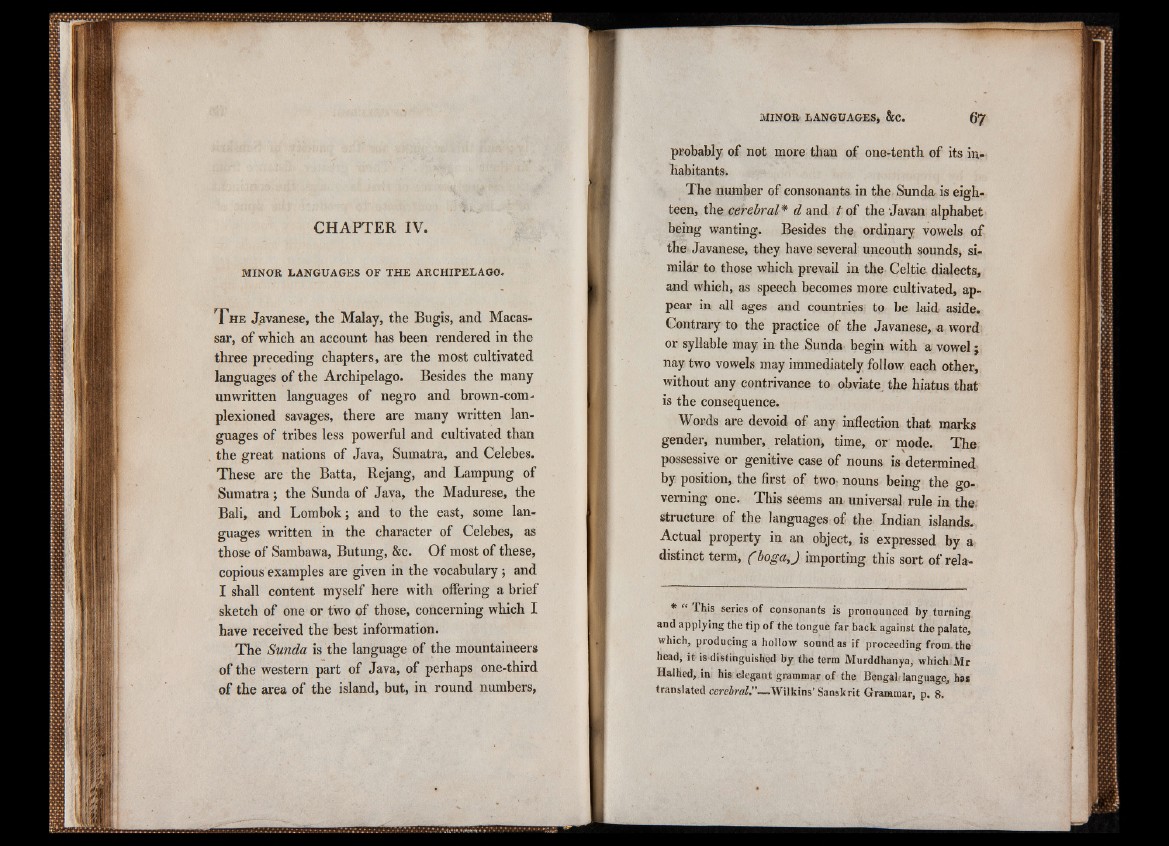
CH A PTER IV.
MINOR LANGUAGES OF THE ARCHIPELAGO.
T he Javanese, the Malay, the Bugis, and Macassar,
of which an account has been rendered in the
three preceding chapters, are the most cultivated
languages of the Archipelago. Besides the many
unwritten languages of negro and brown-com-
plexioned savages, there are many written languages
of tribes less powerful and cultivated than
the great nations of Java, Sumatra, and Celebes.
These are the Batta, Rejang, and Lampung of
Sumatra ; the Sunda of Java, the Madurese, the
Bali, and Lombok; and to the east, some languages
written in the character of Celebes, as
those of Sambawa, Butung, &c. Of most of these,
copious examples are given in the vocabulary; and
I shall content myself here with offering a brief
sketch of one or two of those, concerning which I
have received the best information.
The Sunda is the language of the mountaineers
of the western part of Java, of perhaps one-third
of the area of the island, but, in round numbers,
probably of not more than of one-tenth of its inhabitants.
The number of consonants in the Sunda is eioffh- teen, the cerebral* d and t of the Javan alphabet
being wanting. Besides the ordinary vowels of
the Javanese, they have several uncouth sounds, similar
to those which prevail in the Celtic dialects,
and which, as speech becomes more cultivated, appear
in all ages and countries to be laid aside.
Contrary to the practice of the Javanese, a word
or syllable may in the Sunda begin with a vowel;>
nay two vowels may immediately follow each other,
without any contrivance to obviate the hiatus that
is the consequence.
Words are devoid of any inflection that marks
gender, number, relation, time, or mode. The • possessive or geni’ tive case of nouns is Vdetermined
by position, the first of two- nouns being the governing
one. This seems an universal rule in the;
structure of the languages of the Indian islands.
Actual property in an object, is expressed by a
distinct term, (boga,) importing this sort of rela*
lhis series of consonants is pronounced by turning
and applying the tip of the tongue far back against the palate,
Which, producing a hollow sound as if proceeding from, the
head; it is distinguished by the term Murddhanya, which. Mr
Halhed, in his elegant grammar of the Bengal language, h«
translated cerebral.”—Wilkins’ Sanskrit Grammar, p, 8.